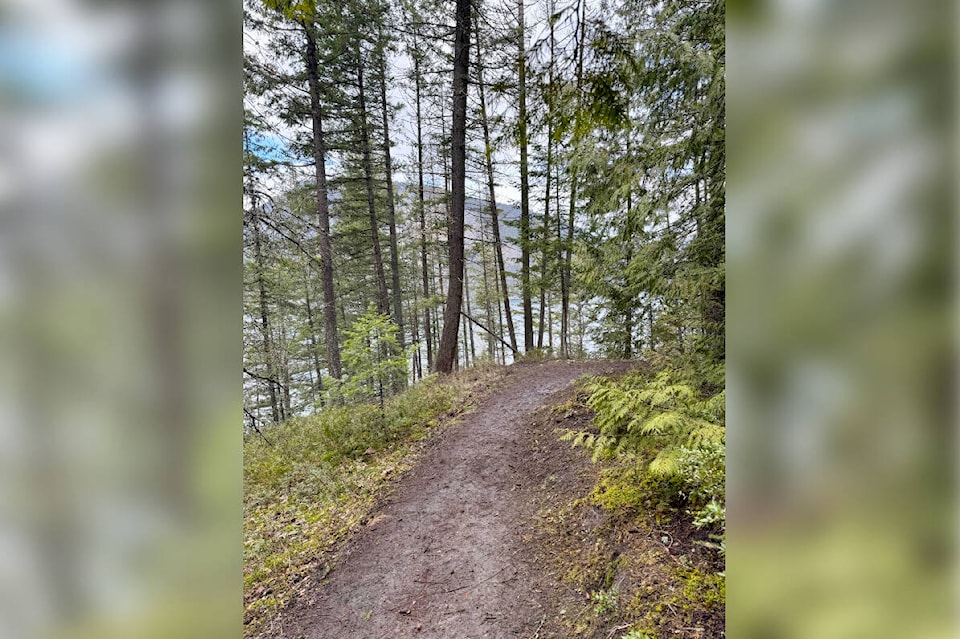By Glenda Hanna
Special to the Observer
In the recent Observer article, Retired Foresters Share Wildfire Frustrations with Columbia Shuswap Board, Archie MacDonald boiled down the problem of old forests in the province as “less diversity and more susceptibility to disease, pests and drought.” He said the solution is “the creation of forest management practices that create younger and healthier forests that are less dense, include more diversity and that allow openings and meadows to develop.” One would have to look long and hard for a professional biologist or forest ecologist who would disagree with that assessment.
The issue not only relates to provincial Crown lands, but also to urban forested parklands.
Because urban forested parks serve different roles than more remote Crown lands, the critical emerging issue is: How should wildfire risk reduction treatments in our urban woodland parks be implemented so they significantly reduce the risk of a wildfire growing out of control WHILE conserving or even enhancing forest ecology (e.g., biodiversity, wildlife habitat) and park user values (e.g., recreation opportunities, aesthetics, connection to nature, etc.)?
In 2022, the City of Salmon Arm contracted a local forestry services company to mitigate wildfire risk in about half of Little Mountain Park.
The Shuswap Naturalist Club noted the removal of dozens of exclusively small to mid-sized trees, including many that did not pose obvious ladder-fuel issues to adjacent trees.
What was left in the treated area was little more than a sterile mature tree stem stand with some decaying logs left on the ground. Rather than supporting Mr. Macdonald’s proposed requirement to “increase diversity and create openings,” the results observed in Little Mountain reflected a loss of biodiversity, tree age-composition variety, and wildlife habitat and significant negative impacts on the park user experience.
Biologists and others in the club reviewed the science of wildfire risk reduction in forests in general, and that particular to parks. Club members toured Little Mountain Park with the proponent and, dissatisfied that the project had followed the best available science for wildfire mitigation work in parks, wrote to the City recommending changes in future similar projects, including:
• Selectively removing non-deciduous trees of different ages vs. just small/mid-size trees, including the judicious removal of some large trees to allow more light penetration;
• Emphasizing pruning of lower branches of small to mid-size trees vs. cutting them down except where a clear ladder-fuel issue exists;
• Leaving, or even actually planting more fire-resistant broad-leafed trees and shrubs to hasten understory development and support wildlife habitat.
To be fair, currently, the funding office for wildfire mitigation in urban parks in B.C. pushes applicants to follow the BC Wildfire Service Fuel Management Prescription Guidance document. This source has a strong focus on the “fuel management” side of the equation and, contrary to supporting the enhancement of biodiversity and younger healthy forests, prioritizes the removal of small vs. mature trees. It was not written with parklands in mind, so does not reflect any need for, nor process to execute a conscious balancing of objectives in the criteria or prescription process.
Rick Manwaring, Deputy Minister of Forests, has noted that “wildfire mitigation may be different in parks” and encouraged reference to BC Parks’ approach to reducing fire risk while providing for conservation, park user and cultural heritage values.
That said, there is good news to celebrate here! Salmon Arm recently unveiled planned wildfire mitigation projects for the rest of Little Mountain Park and for Park Hill. The more than 40 citizens who showed up to the city’s Open House in December were pleasantly surprised the new contractor is bringing a much more balanced approach, including:
• In both parks, taking care to leave the deciduous understory and ground cover, and focusing treatment on cleaning up small diameter woody debris on the ground (think ‘kindling’), pruning lower branches of trees (up to 3 m up or a max of 50 per cent of tree height, whichever is less), and judiciously removing only smaller trees that, by their location, would likely present significant ladder fuel issues;
• Focusing treatments in Little Mountain within 10-15 m on either side of the major Outer Loop trail in the park, recognizing that fires here would most likely be human-caused along this very popular corridor.
• In Park Hill, focusing treatment primarily within a 100 m buffer area along the significant infrastructure abutting the park; the two subdivisions and Canoe Beach Road.
Decisions about the best level and types of wildfire mitigation treatments in parks in Salmon Arm and other municipalities must be undertaken with a general view to significantly reducing fire risk while conserving forest ecology and park user values, and it must also consider the unique circumstances of a given park and its location.
For example, the Salmon Arm Fire Department endorses the new, balanced approach the city is adopting this year because fire department response times are good in this city; they believe there is little risk of a wildfire in one of the parks growing out of control. The equation may work out differently in some other municipalities. The priority should be on rational decision making versus grabbing a one-size fits all model.
We are proud to see Salmon Arm taking a leadership role in this effort that reflects rational, science-based decision making appropriate for our treasured parks.
Glenda Hanna is a member of the Shuswap Naturalist Club
